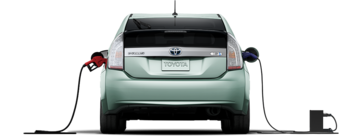 Readers will be much amused by the recent report from consultancy firm Element Energy (see bottom of post). Prepared for Lord Deben's Committee on Climate Change, it describes the gap between real-world performance of motor vehicles and what happens in the test laboratory - a topical subject, I'm sure you will agree.
Readers will be much amused by the recent report from consultancy firm Element Energy (see bottom of post). Prepared for Lord Deben's Committee on Climate Change, it describes the gap between real-world performance of motor vehicles and what happens in the test laboratory - a topical subject, I'm sure you will agree.
The report's main theme is that manufacturers are gaming the rules of the test procedures to make their cars appear to perform better than they will do in real life. The performance gap could be as much as 50% in a few years' time although it is expected to shrink when new performance standards come into play.
What caught my eye was the discussion of hybrids. The official tests assume that hybrids are driven in electric mode for two thirds of their mileage. The reports authors' reckon that it is rather less and suggest that, as a result, the overall carbon emissions could be as much as 50% higher than suggested by the test results.
But it gets worse. The authors reckon that in the real world, drivers don't stop to recharge the batteries - they drive on the petrol engine. Apparently in the Netherlands surveys have suggested that there may be a 200% gap in emissions performance between the real world and the test results because of this effect. The authors suggest that the figure may be lower elsewhere, perhaps of the order of 100-150%. In essence, for much of the time, hybrid drivers are carting around a run-down battery that they don't use - it's the hidden cost of virtue signalling if you like.
The report concludes that even in the real world, emissions from hybrids are much lower than from conventional cars. Of course this involves completely ignoring the emissions produced in the production of electricity. Given the share of fossil fuels in the UK's electricity generation mix, it is quite likely that hybrids are generating more carbon dioxide emissions than conventional vehicles.
But unfortunately, this seems to have been beyond the scope of the report.